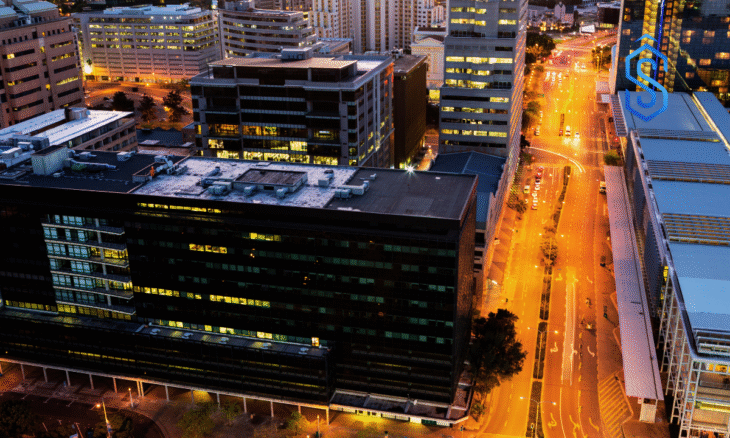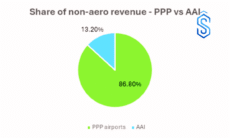Pune: Knight Frank India, in its latest report “A Billion Sq Ft and Counting – India Office Supply Growth Story”, has revealed that Pune office stock has crossed a significant milestone of 106 million sq ft in H1 2025.
Contributing 11% to India’s total office space, Pune has emerged as one of the most dynamic and cost-effective commercial real estate hubs in the country.
Since 2005, Pune’s office market has recorded a CAGR of 8.9%, outpacing the national average and reaffirming its place among India’s top-tier office destinations.
Also Read: Pune Property Sales Registrations Cross 1 Lakh in H1 2025: Knight Frank
Pune Office Stock: Peripheral Districts Drive Commercial Growth
Over 51% of Pune’s total office stock is concentrated in Peripheral Business Districts (PBDs) such as Hinjewadi and Kharadi.
These submarkets have gained prominence due to robust infrastructure, scalable campuses, and attractive rental yields, making them the preferred choice for technology companies, startups, and Global Capability Centres (GCCs).
Suburban Business Districts (SBDs) including Baner, Aundh, Kalyani Nagar, and Yerawada account for 38% of the total stock, while the older Central Business Districts (CBDs) like Camp and Bund Garden contribute the remaining 11%, reflecting the city’s shift toward decentralized, corridor-led commercial growth.
Also Read: Pune Office Market Logs Highest H1 Leasing in Over a Decade: Knight Frank
Pune Office Stock: High-Quality Grade A Inventory Powers Demand
According to the report, 50% of Pune office stock – commercial inventory is Grade A – modern, high-specification buildings catering to enterprise-grade needs. This availability of premium real estate, combined with a young, digitally skilled workforce and competitive rentals, continues to attract multinational firms and R&D centres to the city.
P Vilas, National Director – Occupier Strategy & Solutions at Knight Frank India, said: “Pune has quietly emerged as a high-growth, innovation-focused office market with a unique blend of talent, affordability, and Grade A supply. The dominance of PBDs shows the city’s success in enabling corridor-based development models, particularly in IT and R&D.”
Pune Office Stock: Rising Rental Trends and Investment Outlook
The Kharadi-Hinjewadi-Shivajinagar corridor is already witnessing upward rental pressure, with newer Grade A assets commanding premiums. With expanding metro connectivity and improved road infrastructure, investor confidence in Pune’s PBDs is expected to increase further.
Pune continues to attract tech, GCC, and manufacturing-linked occupiers, owing to its ability to deliver cost-effective, scalable workspaces. With strong absorption trends and growing institutional participation, Pune is poised to play a pivotal role in India’s journey toward the next billion square feet of office supply.
Key Milestones in India’s Office Stock EvolutionPeriod Phase Key Drivers Stock Growth (mn sq ft) % Change 1990–2000 Tech Boom Foundation Economic liberalization, early IT services growth, emergence of tech parks, limited supply mainly in CBDs, rise of Indian software exports Grew to 192 – 2000–2008 IT/ITES Expansion Era Offshoring boom, rise of IT/ITES occupiers, large integrated campuses, suburban corridor expansion (e.g., Whitefield, Hinjewadi, Cyberabad) 192 → 278 (+86) 45% 2008–2010 Great Recession Impact Global financial crisis, demand contraction, rental corrections, consolidation of occupier footprints 278 → 355 (+77) 28% 2010–2014 Recovery & Consolidation Demand recovery, infrastructure investments (metros, roads), growth of BFSI/consulting demand, entry of global funds 355 → 544 (+188) 53% 2015–2019 Policy Reforms Era Launch of REIT framework, India’s first REIT (Embassy), implementation of RERA & GST, infra push, entry of coworking office players 575 → 756 (+181) 31% 2020–2023 COVID Era, Recovery and proliferation of flex space Pandemic-led disruption, hybrid work adoption, resilience of REITs, rise in enterprise adoption of flex and managed offices, technology integration 791 → 922 (+131) 17% 2024–Present Rise of GCCs and AI Rapid GCC expansion is accelerating demand for AI-integrated, tech-enabled workplaces. Flex space is becoming mainstream, ESG mandates are shaping asset choices, and design is increasingly centred on wellness, productivity, and innovation. 973 → 993 (+20) 2%
Source: Knight Frank Research










